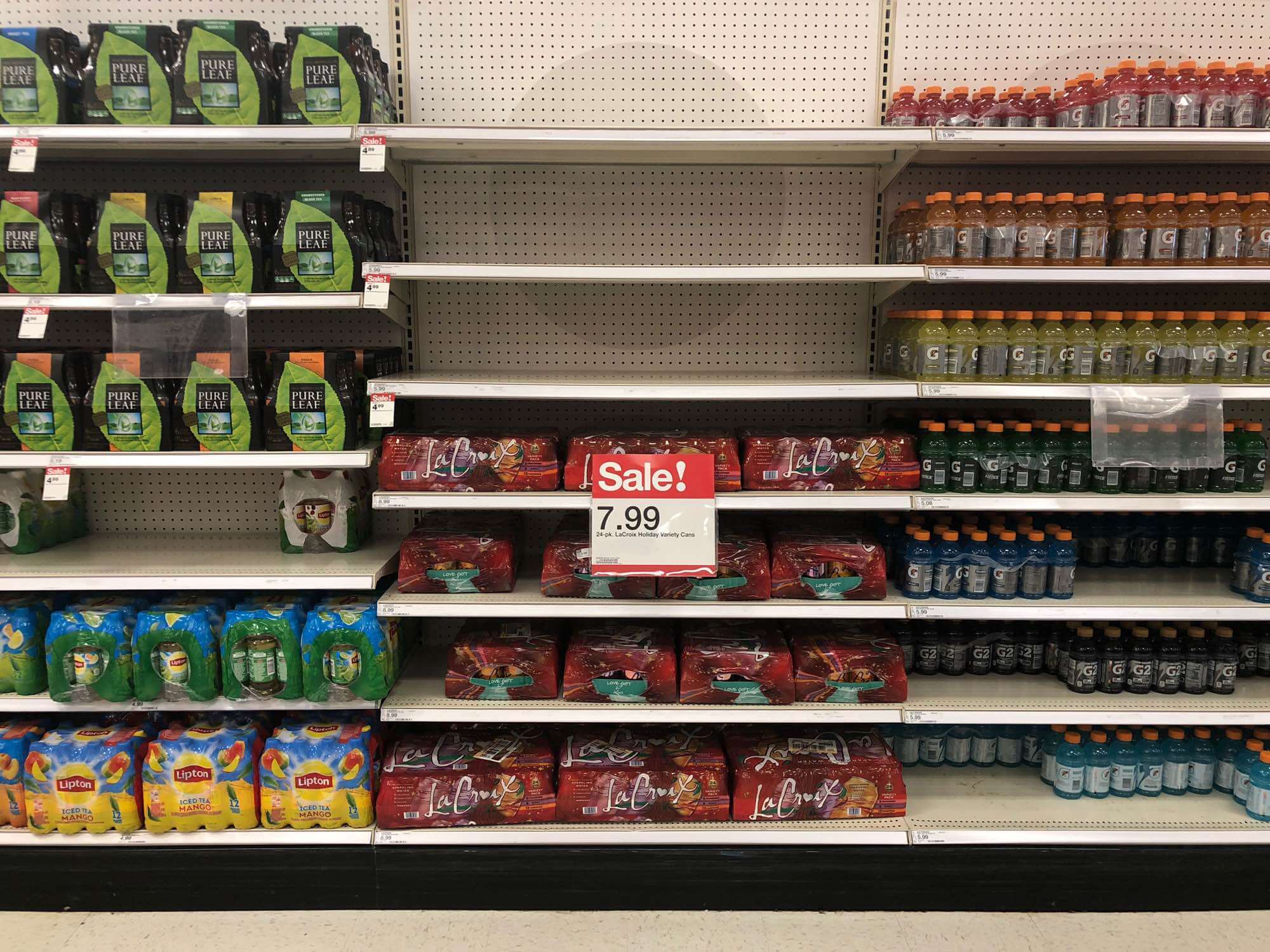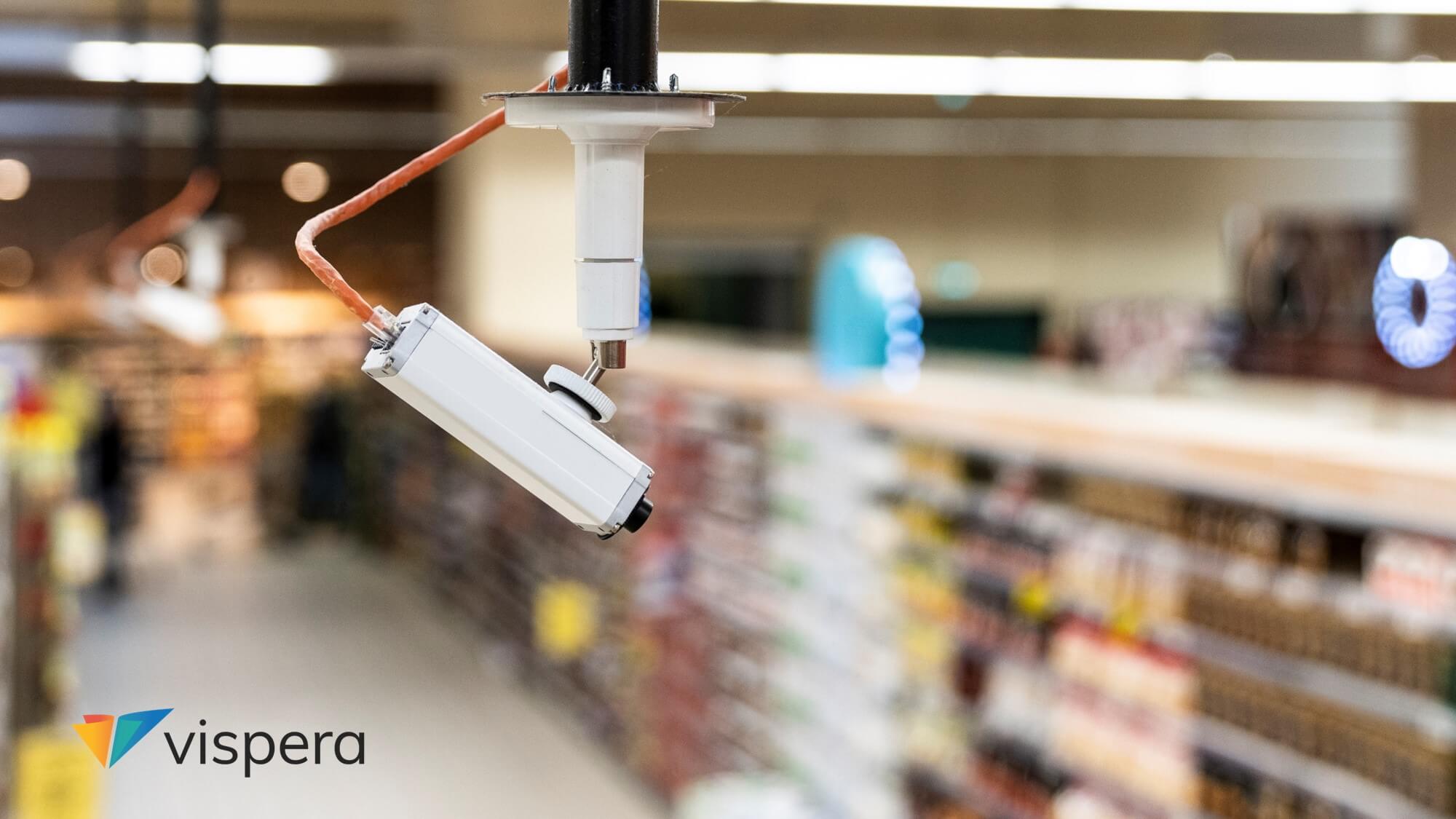Out-of-Shelf in Retail - Still an Issue
The problem of Out-of-Shelf has been an issue since the existence of retail. However, a sustainable and sufficient solution of the problem has not yet been found. Also, the term Out-of-Shelf is used very generally. From the shopper's point of view, the problem consists of an empty shelf. Basically, the entire situation can be broken down into several individual components:
- First, the merchandise is not on the shelf, but can be in the warehouse or in a secondary placement on the sales floor (Out-of-Shelf (OOS)).
- Second, the merchandise is in the store's warehouse but not on the sales floor (Not-on-Floor-but-on-Stock (NOFBOS)).
- Third, the merchandise is not on the sales floor (Out-of-Floor (OOF)). Or, it is not available at the location (Out-of-Stock (OOSt)).

Causes of Out-of-Stock and Out-of-Shelf
The list alone suggests that the problem seems to be largely located in the retail sector. Experience shows that the majority of the problem is also caused there. The products are ordered too late, not at all or incorrectly. Or the cause is that products are ordered and delivered too early. In addition, in large formats, the delivery often disappears in the warehouse and is often found again too late.
Out-of-Shelf from the Shopper's Point of View
But what does this mean from the shopper's point of view? The shopper is faced with an empty shelf. And this is not just everyday life in the German grocery trade. At first glance, disappointed and angry shoppers are left behind. Second, OOS means loss of turnover and profit. Calculated on the basis of many cases per year, the scope of the problem becomes apparent. On average, trade and industry lose four percent of their turnover. With an average out-of-stock rate of 8.6 percent, this is a factor that should not be neglected.
Shopper Reactions to Out-of-Shelf
The annoyance of shoppers can also have negative consequences in the long run: Their reactions range from a product replacement (45%) to changing shops (31%) or postponing a purchase (15%). Or there is even the threat of not buying at all. For retailers, this means a loss of sales of up to 1 billion Euros annually.
When Do Out-of-Shelf Events Occur?
But when and why do Out-of-Shelf events occur? A study by Roland Berger names the main causes: problems in the ordering process, listing differences as well as inefficient back-store management, and the switch from drop shipments to central warehouse deliveries. That is why many retail companies rely on intelligent merchandise management systems as well as automated and optimized ordering processes. This does eliminate some of the causes. But especially the last mile from the retail warehouse to the shelf remains unconsidered. Depending on the study, 72% or 85% of the causes for OOS can be found directly there. But you have to start at the shelf to get a grip on Out-of-Shelf.
Optimization of Shelf Availability: Optimal Shelf Availability
This involves optimizing shelf availability, the Optimal Shelf Availability (OSA). This avoids shelf gaps and thus strengthens the image and sales of brands, manufacturers, and ultimately retailers. OSA is a concept that ensures optimal shelf replenishment at the point of sale. It thus enables higher product availability - one of the three most frequent wishes of consumers besides shorter waiting times at the checkout and interesting promotions while shopping. Full shelves - satisfied shoppers, is the goal.
Various Measures to Increase the OSA
There are now various measures to ensure optimal shelf availability:
- Personal, visual inspection of shelf availability by sales staff: to this end, a first step is to sensitize retail staff to the problem. After all, they are responsible for stocking the shelves.
- Use of smart shelves and RFID transponders on the products: In this process, RFID antennas (RFID stands for radio frequency identification) are integrated into the shelves of the goods in the shops, which pick up the signals of the RFID transponders of the products. If a signal is missing, the product is also missing from the shelf.
- Forecasting OOS on the basis of statistical procedures: Mathematical-statistical methods based on sales patterns are used to forecast OOS situations by using concrete data from the point of sale. In this way, sales patterns of an item can be derived on the basis of turnover frequency and volatility (fluctuations in certain time intervals/time series).
- Real-time SKU-level shelf monitoring: Permanent shelf monitoring makes inventory management faster, more accurate and safer.
All these methods have their advantages and disadvantages. These will not be discussed in detail. However, the last measure promises to be a promising approach.
Vispera Shelfsight Offers Real-Time Shelf Monitoring

Vispera Information Technologies offers a solution for real-time shelf monitoring. This is based on image recognition and deep learning. It increases product availability while improving planogram fulfillment by up to 20%. The Vispera Shelfsight solution automates the shelf inspection process and provides a constant digital record of shelf contents throughout the shop. It works with normal shelves, promotional displays, refrigerated shelves, etc. It detects Out-of-Shelf situations, misplaced and excess items, and other issues that do not meet planogram compliance. With a better view of shelf stock, retailers can make data-driven decisions on merchandise purchasing and store staff deployment.
Vispera Shelfsight Challenges
Shoppers expect to find the products they want, when they want them. Yet understanding shelf inventory to correctly identify specific OOS items requires more than generic object recognition. Visual inspection of shelf stock requires the recognition of many different products. This is because fast-moving products, product appearance changes, new product introductions, and product discontinuations create an ever-changing inventory landscape that needs to be updated regularly.
Vispera Shelfsight Automates Shelf Monitoring in Real-Time
Vispera Shelfsight supports the process of shelf inspection using fixed cameras in real-time, continuously and with near-perfect accuracy. Using state-of-the-art deep-learning algorithms developed by Vispera, Vispera Shelfsight recognizes individual products at SKU (stock keeping unit) level instead of generic product types. The solution also recognizes price tags, reads them, and matches them with the closest product. As a basis, the solution manages a complete digital model of the shelf content. And it generates guided notifications with replenishment tasks to shop staff. In the event of non-conformity, action can be taken quickly to eliminate OOS items and planogram errors and maximize sales by ensuring shoppers find the products they are looking for.
Vispera Shelfsight: Measurements in Two Modes
The system can perform measurements in two modes, scheduled or on-demand. The scheduled mode takes measurements at a preset frequency, e.g. 10 minutes. During each measurement, Shelfsight detects events where shelf stock is insufficient and then provides push alerts to shop staff via screens.
If required, measurement requests can also be made to identify non-compliance issues - including excess stock, misplaced or missing linings, shelf gaps and insufficient shelf space for brands - and report them with a visual task list. Using the Realogram view, discrepancies between ideal shop shelving and a digitized version of actual shop space can be visually highlighted to enable quick replenishment.
In addition to providing live notifications to store staff, Vispera Shelfsight analyses shelf data in the cloud to enable deeper data analysis and trend visualizations. Vispera's web-based reporting applications are accessible from any internet-connected device with a web browser. And Shelfsight's reporting API can integrate data directly into existing enterprise systems.
Advantages of Automatic Shelf Monitoring
The advantages of shelf inventory monitoring with Vispera Shelfsight include:
- Real-time OOS detection: identification of Out-of-Shelf items at the SKU level. This triggers immediate correction of shelf stock issues that could otherwise lead to lost sales.
- Improved planogram compliance: Based on six months of solution data from supermarket chains, product availability and planogram compliance have increased by up to 20 percent in several product categories.
- Historical trend analysis: Cloud aggregation of historical data enables supply chain optimization and a deeper understanding of shopper shopping habits.
- Shelf share monitoring: Shelfsight can monitor a brand's share of shelf space by taking a facing count of all products on display or by determining the percentage of shelf space occupied by each brand.
LEARN MORE ABOUT VISPERA SHELFSIGHT
This article was first published at Digital Connection in German. You can read the article in German through https://www.digitalconnection.de/technologien-und-trends/echtzeit-regalueberwachung-mit-vispera-shelfsight/.
Author:
Dr. Gerd Wolfram
CEO of IoT Innovation & Consult and Partner of Digital Connection
Gerd is CEO of IoT Innovation & Consult and has been involved in innovative technologies in retail and wholesale throughout his career. For more than a decade, he designed various digital touchpoints as Executive Project Manager in METRO Group Future Store Initiative. Today, as a consultant, he develops digital strategies and concepts, supports companies in implementation of digital connection solutions. He is an experienced keynote speaker and among other things writes for the blog “digital connection” and “The future of shopping”.






